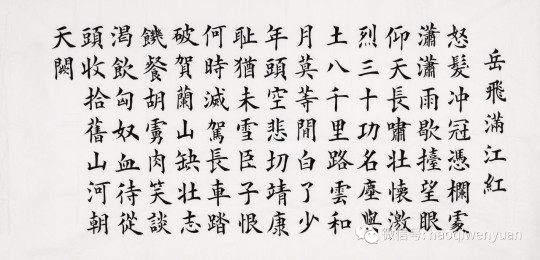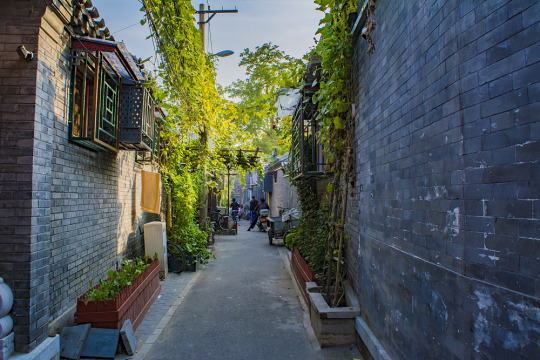Dtlingo shares tips, inspiration & motivation for your studies. We welcome ideas, feedback, and stories of your own journey with Chinese!
Don't wanna be here? Send us removal request.
Text
The Critical Role of Tutoring in Chinese Language Acquisition

With over 1.3 billion native speakers, Mandarin Chinese is one of the most widely spoken languages globally (Ethnologue, 2019). As China’s economic and political influence grows, learning Chinese as a foreign language has become increasingly popular worldwide. However, mastering Chinese presents unique challenges for non-native learners due to its logographic writing system, complex tones, lack of cognates, and cultural differences (Xiao, 2006). Extensive research indicates that individualized tutoring significantly enhances outcomes in Chinese language education.
Several studies on US college students found that one-on-one tutoring produced substantial gains in Chinese language proficiency compared to traditional classroom instruction alone (Chen, 2011; Luo, 2013). Students who attended weekly tutoring sessions over one academic year demonstrated greater improvement in reading, writing, listening, and speaking skills. Researchers posited that the highly contextualized feedback and scaffolding provided by tutors accounted for the enhanced performance.
Similarly, a Singapore study of secondary school students showed that struggling Chinese language learners substantially improved their exam scores after receiving supplementary small group tutoring (Wong, 2017). The personalized attention facilitated remediation of gaps in knowledge.
Beyond academic settings, tutoring also plays an important cultural role in Chinese language education. Native speaker tutors socialize learners into traditions and customs through contextualized instruction. They model authentic dialogue, providing vital exposure to colloquial vocabulary and usage often absent in classroom materials (Wang, 2009). This immersion builds learners' sociolinguistic competence.
In summary, research highlights the unique benefits of individualized tutoring, particularly for a complex language like Chinese. The tailored guidance, scaffolding, and cultural immersion enhances proficiency outcomes beyond conventional teaching methods alone. With a specialized tutor, a motivated student can make remarkable progress in comprehending and using this fascinating language.
If you are serious about Chinese language learning, welcome to visit Dtlingo and learn with us.
References
Chen, A. (2011). Outcomes of one-on-one tutoring in beginning Chinese: An analysis of student performance. Foreign Language Annals, 44(4), 727-756. https://doi.org/10.1111/j.1944-9720.2011.01144.x
Luo, J. (2013). The effects of supplemental native language tutoring on Mandarin learning outcomes. Language Learning Journal, 41(1), 7-20. https://www.tandfonline.com/doi/abs/10.1080/09571736.2011.625096
Wong, L. (2017). Improving struggling learners’ Chinese language acquisition through small group tutoring. Sino-US English Teaching, 14(10), 715-725. http://www.davidpublisher.com/index.php/Home/Article/index?id=37833.html
Wang, X. (2009). Incorporating sociocultural norms in CFL teaching: The case of requesting. International Journal of Learning, 16(8), 211-226. https://doi.org/10.18848/1447-9494/CGP/v16i08/46200
Xiao, J. (2006). Difficulties and characteristics of Chinese language learning. Sino-US English Teaching, 3(5), 15-19. http://www.linguist.org.cn/doc/su200605/su20060503.pdf
#dtlingo#chineselanguage#learnchinese#onlinechinese#chinesecourse#hsktest#passhsk#tutoring#chinesetutoring
0 notes
Text
Does learning foreign languages still matter in the age of AI?

Artificial intelligence (AI) is rapidly reshaping our world, and it is essential that we equip children with the necessary skills to thrive in this new era. While technical skills and STEM education are crucial, focusing solely on these areas neglects the importance of human qualities and the power of multilingualism. In this article, we will delve deeper into the significant changes in the age of AI, and figure out if we still need to ask our children to learn foreign languages.
The Impact of AI on Job Markets:

Research conducted by Oxford University reveals that a significant portion of jobs is at risk of being replaced by AI and automation. This necessitates a shift in educational priorities, with a greater emphasis on skills that complement and differentiate human capabilities from machine intelligence. While technical skills are in high demand, it is equally important to nurture creativity, critical thinking, and social-emotional intelligence, as these uniquely human qualities will continue to be highly valuable in the future job market.

The Cognitive Benefits of Multilingualism:
Harvard University research demonstrates that bilingual individuals possess enhanced focus and cognitive control. Constantly switching between languages exercises the bilingual brain, resulting in improved cognitive flexibility. Studies have even shown that bilingual children exhibit greater cognitive abilities from as early as 7 months old, while bilingual adults have stronger conflict management skills. Multilingualism stimulates mental agility and provides individuals with a competitive edge in an AI-driven world.
Career Advantages of Multilingual Skills:
In our interconnected and globalized world, multilingualism opens doors to exciting career opportunities. LinkedIn talent research reveals that bilingual candidates are highly sought after, often receiving 20-30% more job offers. The U.S. Bureau of Labor Statistics projects a significant increase in jobs for interpreters and translators, surpassing the average job growth rate by five times. Multilingual skills have become a valuable asset, allowing individuals to navigate diverse cultural contexts and contribute to international collaborations.
Shaping the Future:
While AI technology continues to advance, it is important to recognize that human talent remains irreplaceable. Education systems should strive to develop well-rounded individuals who possess technical literacy, social-emotional skills, and creativity. By promoting multilingualism, we encourage cognitive flexibility, cultural understanding, and effective communication. Moreover, multilingual individuals are better equipped to bridge gaps between cultures and facilitate meaningful connections in an AI-dominated world.

In conclusion, as AI reshapes job markets and demands new skill sets, it is imperative that we provide children with a holistic education that encompasses technical skills, social-emotional intelligence, and multilingualism. By nurturing these diverse abilities, we empower students to thrive in the age of AI, contributing to its development and shaping a future where human potential and technological advancements coexist harmoniously.
Remember, the key to a successful future lies in embracing the unique strengths and qualities that define us as humans, and multilingualism stands as a powerful asset in navigating the complexities of an AI-driven society.
0 notes
Text
Should I Learn Traditional Chinese Characters?

The Chinese language, renowned as the most spoken language globally, has captivated language learners worldwide. However, mastering Chinese characters poses a significant challenge, demanding substantial time and effort. To facilitate the learning process, the Chinese government introduced simplified characters in the 1950s with the objective of increasing literacy rates.
Simplified characters emerged as part of an initiative launched by the Chinese government in the 1950s to improve literacy rates. The objective was to devise characters that are simpler to learn and write, consequently enhancing accessibility to education. This simplification process involved reducing stroke count and simplifying character shapes.

Though the introduction of simplified characters stirred controversy, with concerns raised regarding the potential loss of cultural heritage, the Chinese government proceeded with their promotion. Currently, simplified characters are the standard writing system in mainland China and Singapore, while traditional characters persist in Hong Kong, Macau, and certain overseas Chinese communities.
Advantages of Learning Simplified Characters
1.Enhanced Learning and Writing Efficiency:
Simplified characters offer substantial benefits in terms of ease of learning and writing. With fewer strokes and simplified shapes, they are more accessible to beginners and save valuable time and effort during the learning process.
2.Practicality in Mainland China and Singapore:
Considering the prevalence of simplified characters in mainland China and Singapore, acquiring proficiency in these characters proves invaluable for individuals engaged in business or traveling to these regions. Moreover, an overwhelming majority of Chinese-language materials, such as textbooks and websites, are predominantly written in simplified characters, making them an essential skill for effective communication and engagement.
3.Native Preference and Everyday Communication:
Simplified characters are widely preferred by native Chinese speakers, particularly in everyday communication. The speed at which simplified characters can be written, along with their simplified shapes that facilitate quick reading, contribute to their popularity and practicality.
Factors to Consider when Deciding to Learn Traditional Characters

Despite the advantages presented by simplified characters, certain factors should be taken into account before deciding whether to also learn traditional characters:
1.Business or Travel in Hong Kong, Macau, and Overseas Chinese Communities:
Individuals with business or travel plans involving Hong Kong, Macau, or overseas Chinese communities must familiarize themselves with traditional characters. These regions continue to utilize traditional characters as an integral part of their cultural identity and communication practices.
2.Interest in Chinese Culture, History, and Literature:
For those with a strong inclination towards Chinese culture, history, and literature, learning traditional characters becomes imperative. Many classical Chinese texts are exclusively available in traditional characters, and a command of this writing system facilitates a deeper understanding of Chinese cultural and historical aspects.
3.Academic Pursuits:
Students aiming to pursue higher-level Chinese studies, such as in a university setting, might be required to learn both simplified and traditional characters. Academic texts and research papers often utilize traditional characters, and familiarity with this writing system becomes essential for comprehensive study and research.
Suggestions from us:
1.learning simplified characters as the primary focus serves as an ideal starting point for individuals seeking to acquire proficiency in Chinese.
2.To optimize the learning journey, it is recommended to begin with a strong foundation in simplified characters.
#dtlingo#chinesecharacters#simplified characters#traditional characters#written chinese#learning tips#academic#学中文#学汉语#中文学习#实用中文
1 note
·
View note
Text
Chinese Barbecue: more than yummy food

Chinese cuisine is renowned for its rich flavors and diverse cooking techniques. Among its many culinary delights, Chinese barbecue stands out as a beloved tradition. With a fascinating history, continuous development, and a wide array of tantalizing flavors, Chinese barbecue has become an integral part of the country's culinary landscape.
The History of Chinese Barbecue
Chinese barbecue, known as "shaokao," traces its roots back thousands of years. It originated during the Zhou Dynasty (1046-256 BC) and gained popularity during the Qin Dynasty (221-207 BC). In its early days, Chinese barbecue mainly involved roasting meat over an open flame, using techniques such as spit-roasting and skewering. The meats were seasoned with fragrant spices, creating a distinctive and enticing aroma.
Development and Culinary Innovations:
Over the centuries, Chinese barbecue techniques have evolved, incorporating various regional styles and cultural influences. Today, you can find a multitude of regional variations, each with its own unique flavors and cooking methods. For example, Cantonese barbecue, also known as "siu mei," is famous for its succulent roasted pork, duck, and goose. Sichuan-style barbecue offers a fiery twist with its use of spicy marinades and chili-based seasonings. Other regions, such as Beijing and Xinjiang, have their own distinct barbecue traditions.
The Current State of Chinese Barbecue
Chinese barbecue has experienced a resurgence in recent years, both in China and worldwide. The popularity of street food culture and the rise of food tourism have contributed to its widespread appeal. In modern times, you can find Chinese barbecue not only in traditional street stalls and night markets but also in upscale restaurants that offer an elevated dining experience. Chinese barbecue's popularity has transcended cultural boundaries and can now be enjoyed in many cities around the globe.
Must-Try Places for Chinese Barbecue:
a. Beijing: The capital city boasts an array of barbecue establishments where you can savor authentic Beijing-style lamb skewers and succulent Peking duck.
b. Chengdu: Known for its fiery flavors, Chengdu offers a vibrant barbecue scene with a Sichuan twist. Don't miss the opportunity to try the spicy skewered rabbit or mouth-numbing grilled tofu.
c. Guangzhou: This southern city is renowned for its Cantonese-style barbecue. Indulge in delicious roasted meats, such as char siu (barbecued pork) or siu mei platters featuring a medley of flavors.
d. Shanghai: Alongside its bustling cityscape, Shanghai offers delectable grilled seafood options like grilled scallops, skewered prawns, and whole grilled fish, showcasing a fusion of flavors from both east and west.
e. Zibo. Zibo City has recently emerged as a popular destination for barbecue. They offer a delightful combination of small bread, scallions, and grilled meat that is truly impressive. You should give it a try.
Chinese barbecue is a culinary journey that showcases the rich history and vibrant flavors of Chinese cuisine. From its ancient origins to its modern-day popularity, this beloved culinary tradition continues to entice food lovers worldwide.
Whether you're exploring the streets of Beijing, Chengdu, Guangzhou, Shanghai, or Zibo, be sure to indulge in the diverse and mouthwatering world of Chinese barbecue, where every bite tells a story of centuries-old culinary heritage.
0 notes
Text
Beijing's Hutongs: A Window into China's Rich Cultural Heritage

Beijing's hutongs are narrow, winding alleys lined with traditional courtyard homes, offering a glimpse into the city's past and China's rich cultural heritage.
The word "hutong" originally referred to the narrow alleys formed by the walls of traditional Chinese courtyard houses. Today, the term refers to the entire network of alleyways and courtyard homes that make up Beijing's historic neighborhoods.

In the past, hutongs were the primary living quarters for Beijing's residents, with entire families living in one courtyard home. Today, many of these homes have been converted into trendy cafes, boutique shops, and hotels, while others remain as residences for local families.
Visitors to Beijing's hutongs can experience traditional Chinese culture and lifestyle firsthand. Many hutongs have preserved their original architecture, giving visitors a sense of what life was like in Beijing centuries ago. In addition, many of the small shops and restaurants in these neighborhoods offer authentic Beijing-style cuisine and unique handmade crafts.

For those interested in history, the hutongs offer a wealth of knowledge about Beijing's past. Each neighborhood has its own story to tell, from the rise and fall of influential families to the impact of war and politics on the city's residents. By exploring the hutongs, visitors can gain a deeper understanding of Beijing's rich and complex history.
Despite their cultural significance, many of Beijing's hutongs are facing the threat of destruction. In recent years, many hutongs have been demolished to make way for modern developments, leading to concerns about the loss of Beijing's cultural heritage. Fortunately, there are ongoing efforts to preserve the hutongs and raise awareness about their importance.

Life in the hutongs is vibrant and dynamic, with a strong sense of community and tradition. The narrow alleys and courtyard homes foster a close-knit social structure, where neighbors often interact and rely on each other for support.
In the mornings, the streets come alive with the sounds of vendors selling breakfast items like steamed buns, soy milk, and fried dough sticks. Elderly residents can be seen practicing tai chi in the courtyards, while children play games like hopscotch and jump rope on the streets.
In the evenings, families gather in the courtyards to share a meal and catch up on the day's events. The narrow streets are also home to a variety of small businesses, including convenience stores, hair salons, and bicycle repair shops, giving the neighborhoods a lively and bustling atmosphere.
One unique aspect of life in the hutongs is the use of communal facilities. For example, many hutongs have shared public restrooms, which are maintained by the residents themselves. This sense of shared responsibility helps foster a strong sense of community and connection among the hutong residents.

Hutong is a window into a bygone era of Chinese culture and lifestyle, and it is a unique experience for foreigners to witness and appreciate.
1 note
·
View note